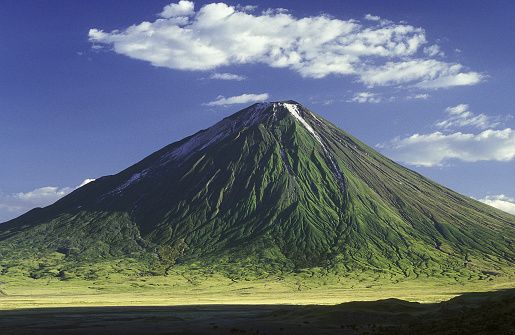
Vetta/Getty Images
Could nuclear waste be disposed of in inactive volcanoes? originally appeared on Quora: the place to gain and share knowledge, empowering people to learn from others and better understand the world.
Answer by Kelly Kochanski, PhD student, Geological Sciences, on Quora:
Could nuclear waste be disposed of in inactive volcanoes? That's an interesting question, and the logic is half right - the center of the Earth would be a very good place to put nuclear waste. It's a big place, already kept warm by radioactive elements. Why not add more?
The problem is that volcanoes are one-way systems. They occur in places where the pressure under the Earth is relatively low. This acts a lot like a suction hose in a tank of water or gasoline, and pulls hot, fluid magma towards the surface. You can't make them change direction and pull material back down.
Truly inactive volcanoes aren't pipes to the middle of the Earth. They're just piles of ordinary, solid rock.
There is one place where material gets pulled deep under the Earth: subduction trenches.
Unfortunately, subduction trenches move only a few centimetres per year, and they cause lots of earthquakes. So the odds are pretty good that - before waste gets subducted to a safe depth - the containers would be broken by a quake, spilling the waste into the ocean.
So, is there a solution?
The biggest requirement for nuclear waste storage is geologic stability. We want a place with no earthquakes, no landslides, no flowing water, nothing that will move waste or break storage containers. And it has to stay stable for hundreds to millions of years. The USGS and other geology organizations have identified a range of good, stable sites, in places like Death Valley, Utah and New Mexico.
Our current waste problems are political. Lots of sites are good, but no site is perfect, and no one wants nuclear waste in their backyard.
Until then, waste will keep sitting in dump sites and at power plants. We have better solutions, geologically. We just have to decide which ones to use.
Nuclear waste can last anything from fractions of seconds to millions of years. So, how stable is stable enough?
My research group is currently evaluating a certain dump site. This site, in an otherwise pleasant valley, is a nuclear mess. It has broken waste pipes and drums seeping radioactive liquid and a scary plume of contaminated groundwater.
Our job is to estimate how long we have until the waste reaches the nearest water supply. It's not a great location. Worst case scenario, the place collapses in a landslide fifty years from now. Best case, it makes it until the river grows through the valley - ten thousand years, maybe. (We'll get a better answer soon!)
The department of energy, who will have to clean up the mess if it's unsafe, by-and-large says 'ten thousand years of stability is more than enough'.
Environmental lobbyists reply, 'no, it's not enough'. The site is upstream of a major city. They want the waste to be stable forever (which is impossible - in ten thousand years a new ice age could scrape the whole mess a hundred miles south) or they want it moved.
The local government says, 'Why don't we move it now [at the DOE's expense] - how about we bury it in the desert in Utah?'
Utah says, 'how about you bury it the desert in New Mexico?'
On it goes.
This question originally appeared on Quora. the place to gain and share knowledge, empowering people to learn from others and better understand the world. You can follow Quora on Twitter, Facebook, and Google+. More questions:
